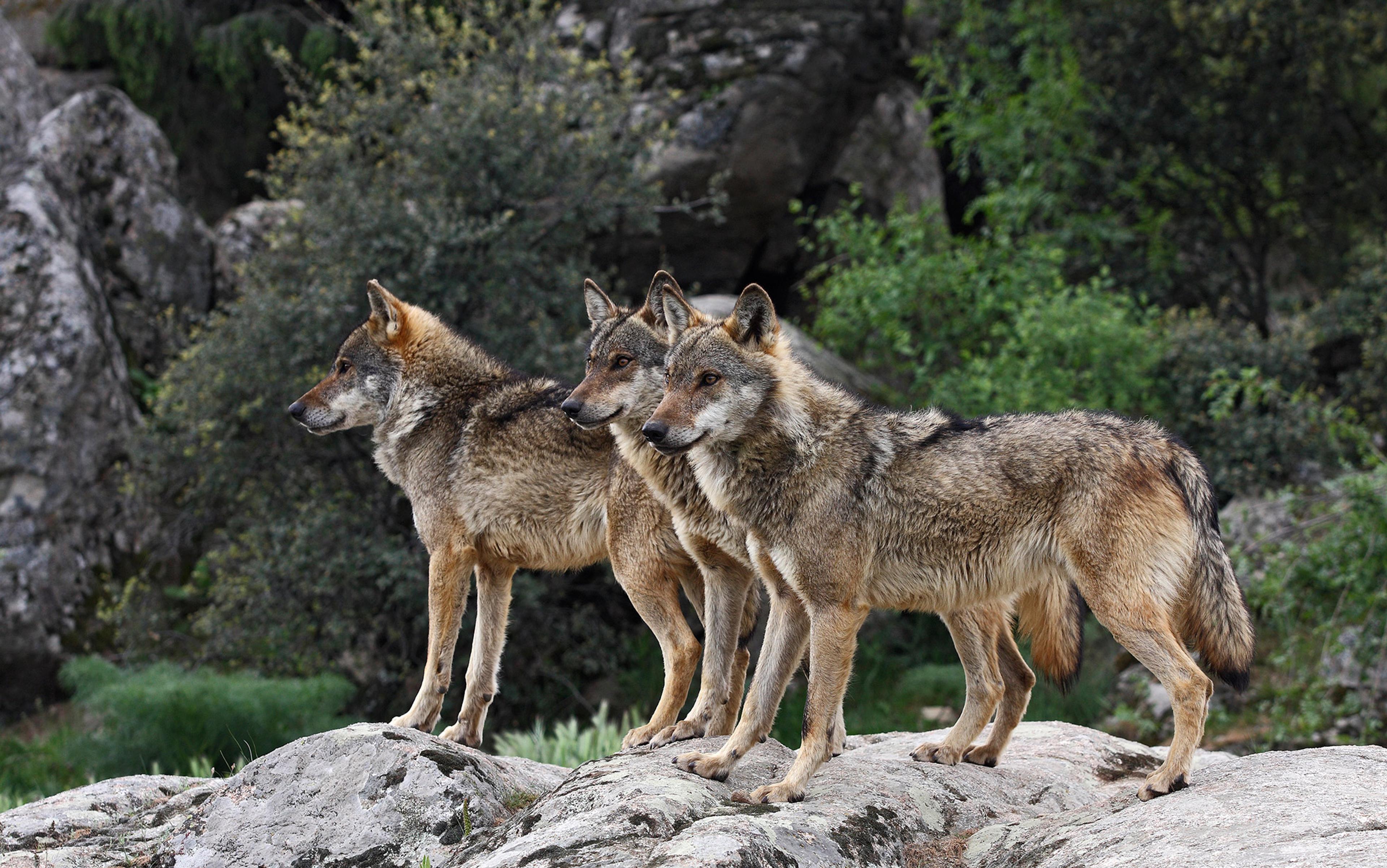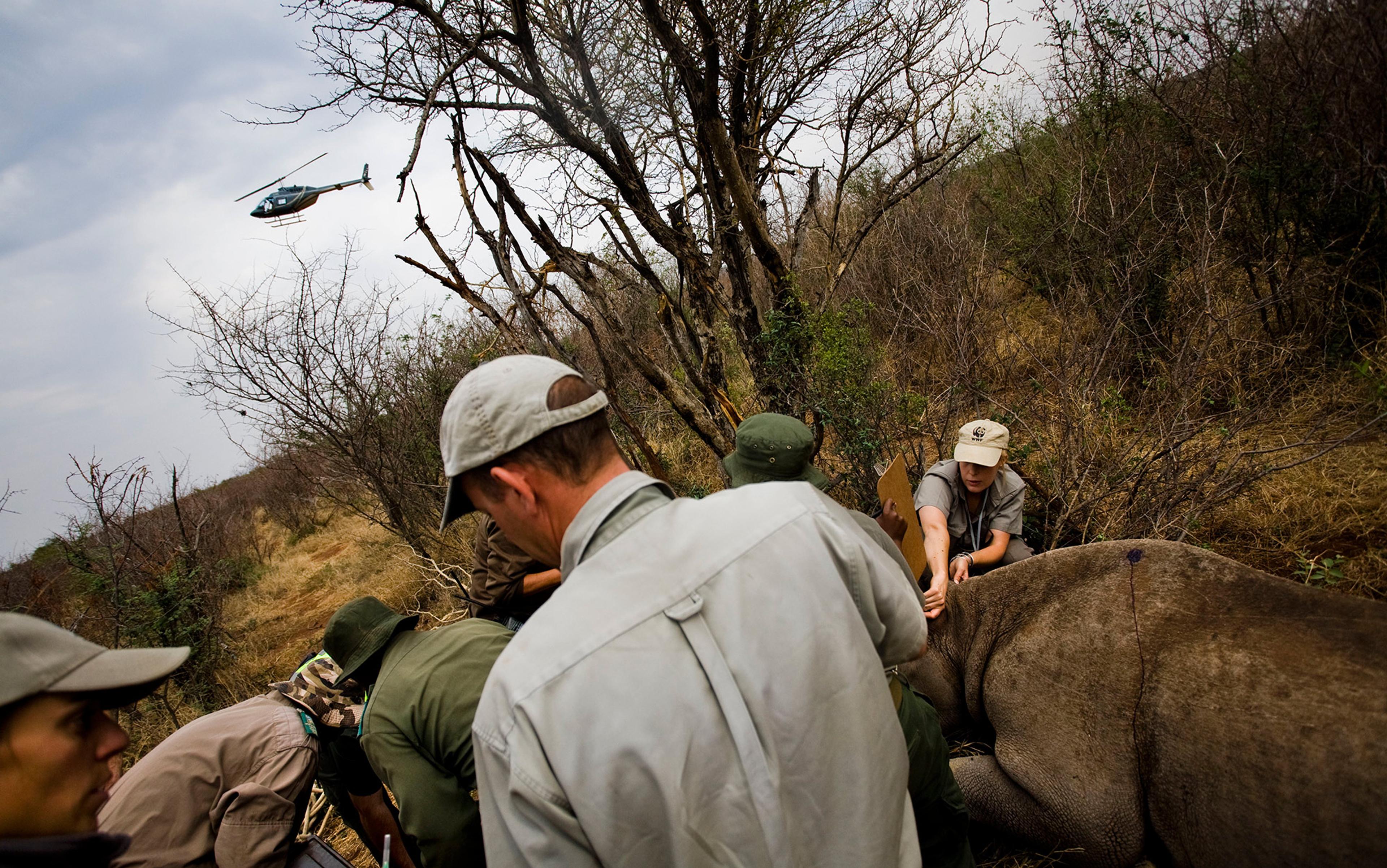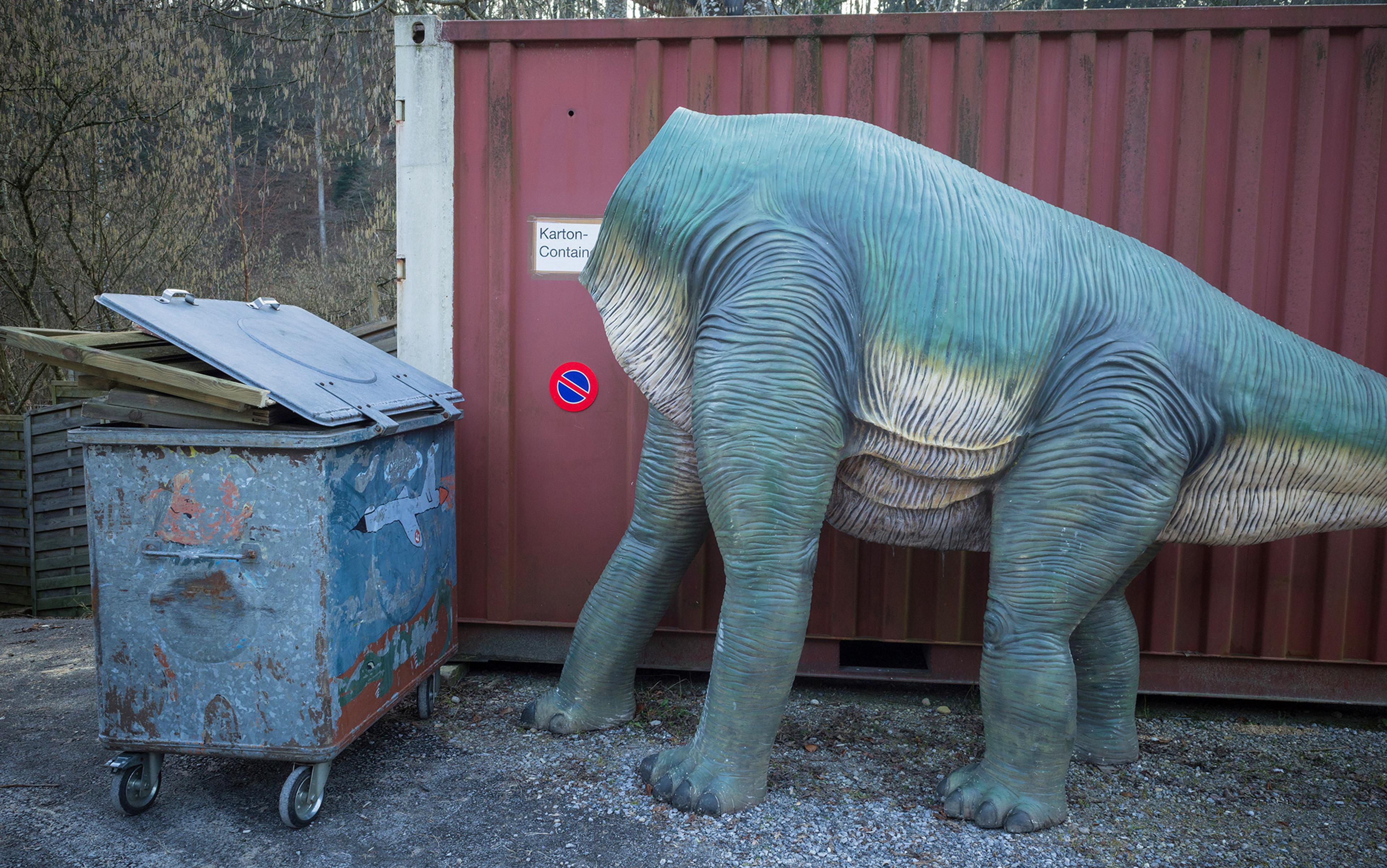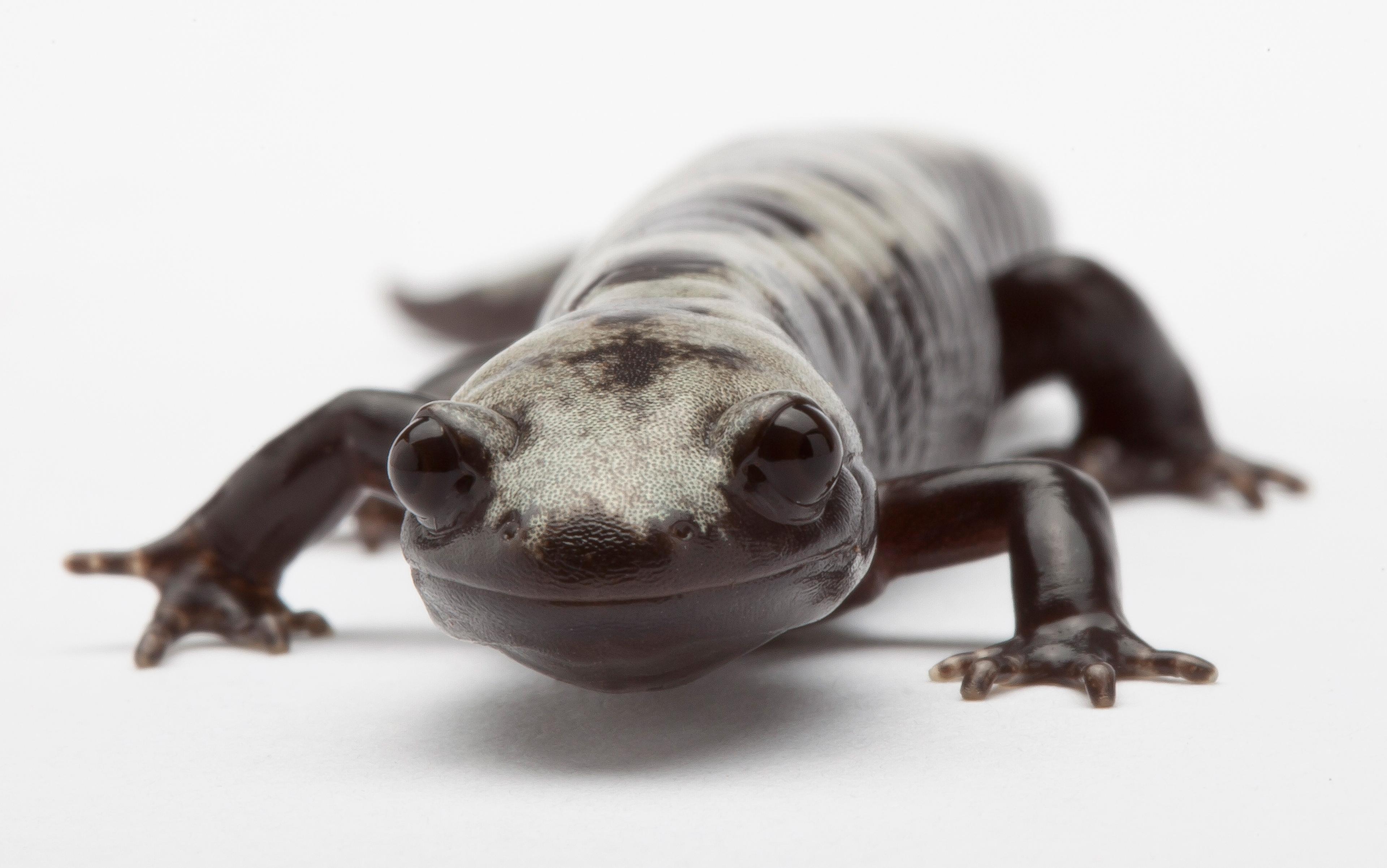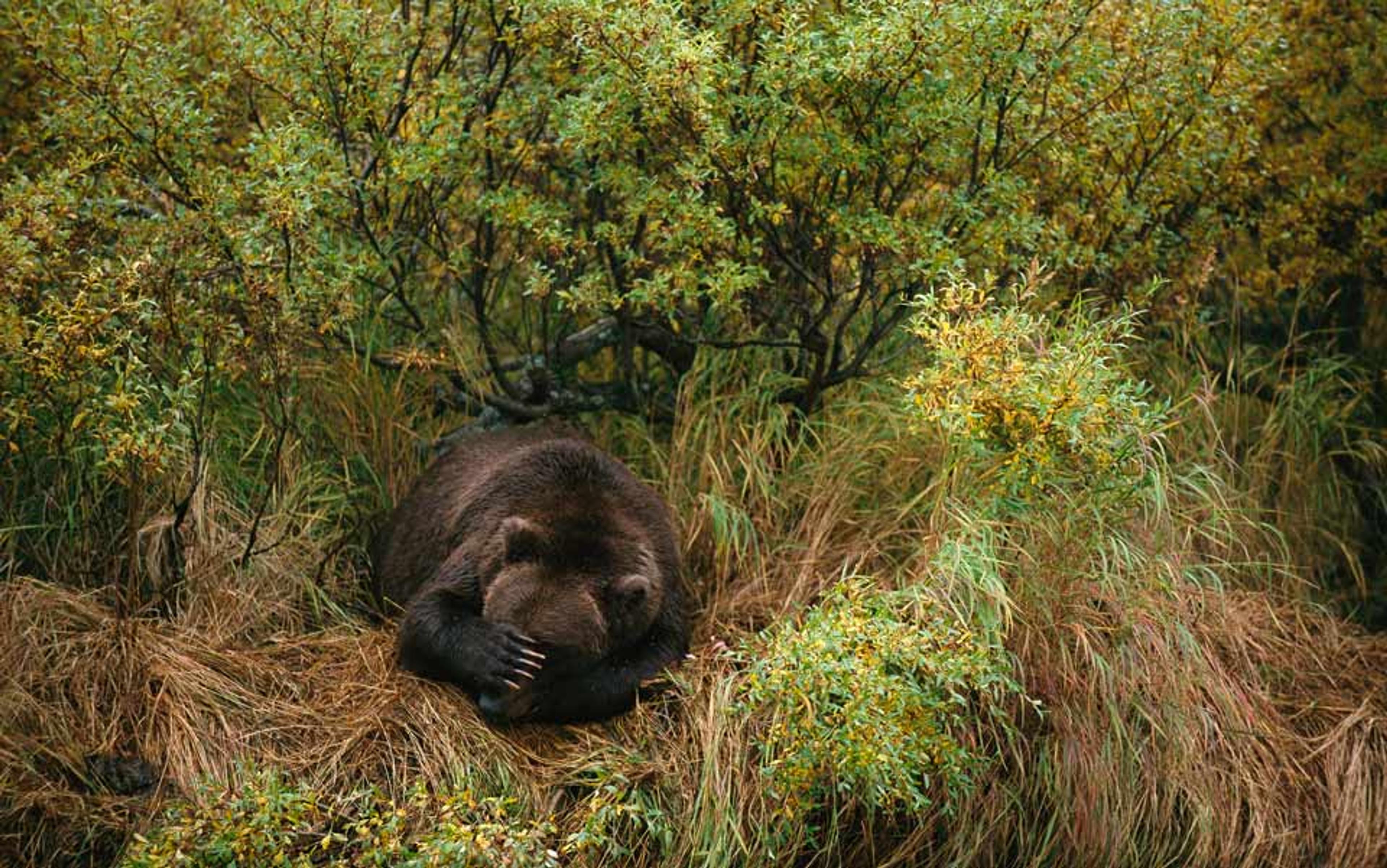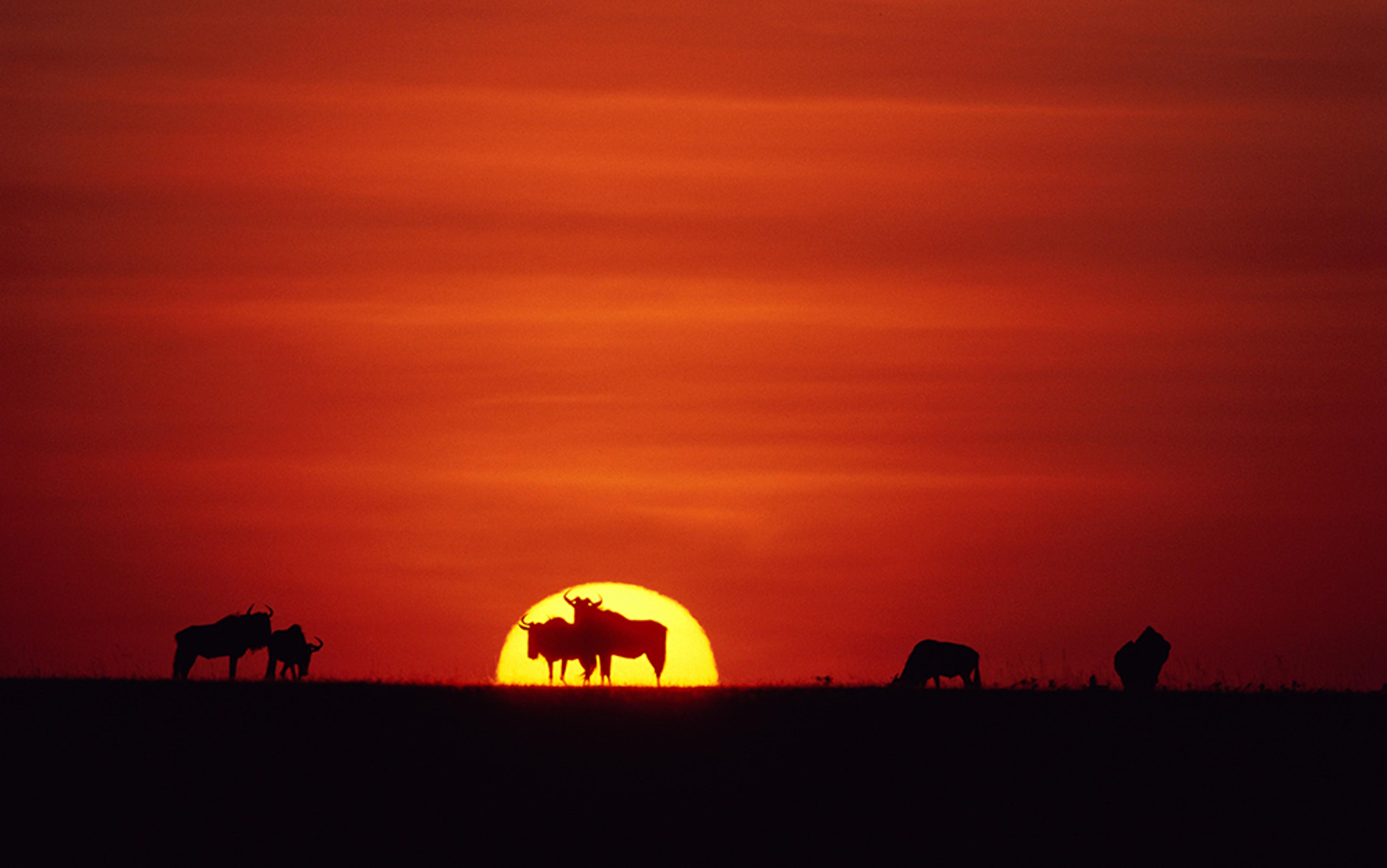The way the public hears about conservation issues is nearly always in the mode of ‘[Beloved Animal] Threatened With Extinction’. That makes for electrifying headlines, but it misdirects concern. The loss of whole species is not the leading problem in conservation. The leading problem is the decline in wild animal populations, sometimes to a radical degree, often diminishing the health of whole ecosystems.
Viewing every conservation issue through the lens of extinction threat is simplistic and usually irrelevant. Worse, it introduces an emotional charge that makes the problem seem cosmic and overwhelming rather than local and solvable. It’s as if the entire field of human medicine were treated solely as a matter of death prevention. Every session with a doctor would begin: ‘Well, you’re dying. Let’s see if we can do anything to slow that down a little.’
Medicine is about health. So is conservation. And as with medicine, the trends for conservation in this century are looking bright. We are re-enriching some ecosystems we once depleted and slowing the depletion of others. Before I explain how we are doing that, let me spell out how exaggerated the focus on extinction has become and how it distorts the public perception of conservation.
Many now assume that we are in the midst of a human-caused ‘Sixth Mass Extinction’ to rival the one that killed off the dinosaurs 66 million years ago. But we’re not. The five historic mass extinctions eliminated 70 per cent or more of all species in a relatively short time. That is not going on now. ‘If all currently threatened species were to go extinct in a few centuries and that rate continued,’ began a recent Nature magazine introduction to a survey of wildlife losses, ‘the sixth mass extinction could come in a couple of centuries or a few millennia.’

The fossil record shows that biodiversity in the world has been increasing dramatically for 200 million years and is likely to continue. The two mass extinctions in that period (at 201 million and 66 million years ago) slowed the trend only temporarily. Genera are the next taxonomic level up from species and are easier to detect in fossils. The Phanerozoic is the 540-million-year period in which animal life has proliferated. Chart courtesy of Wikimedia.
The range of dates in that statement reflects profound uncertainty about the current rate of extinction. Estimates vary a hundred-fold – from 0.01 per cent to 1 per cent of species being lost per decade. The phrase ‘all currently threatened species’ comes from the indispensable IUCN (International Union for Conservation of Nature), which maintains the Red List of endangered species. Its most recent report shows that of the 1.5 million identified species, and 76,199 studied by IUCN scientists, some 23,214 are deemed threatened with extinction. So, if all of those went extinct in the next few centuries, and the rate of extinction that killed them kept right on for hundreds or thousands of years more, then we might be at the beginning of a human-caused Sixth Mass Extinction.
An all-too-standard case of extinction mislabeling occurred this January on the front page of The New York Times Magazine. ‘Ocean Life Faces Mass Extinction, Broad Study Shows,’ read the headline. But the article by Carl Zimmer described no such thing. Instead it was a relatively good-news piece pointing out that while much of sea life is in trouble, it is far less so than continental wildlife, and there is time to avoid the mistakes made on land. The article noted that, in the centuries since 1500, some 514 species have gone extinct on land but only 15 in the oceans, and none at all in the past 50 years. The Science paper on which Zimmer was reporting was titled ‘Marine Defaunation: Animal Loss in the Global Ocean’ by Douglas McCauley, an ecologist at the University of California, Santa Barbara, and colleagues. It stated: ‘Though humans have caused few global marine extinctions, we have profoundly affected marine wildlife, altering the functioning and provisioning of services in every ocean,’ and it went on to chronicle the causes of ‘the proliferation of ‘empty reefs’, ‘empty estuaries’, and ‘empty bays’, with an overall decline of marine fishes by 38 per cent.
Extinction is not a helpful way to think about threats to ocean animals because few go extinct there. The animals are highly mobile in a totally connected vast environment where there is almost always somewhere to hide, even from industrial-scale hunting. Atlantic cod used to be one of the world’s great fisheries before it collapsed in 1992 from decades of overfishing. According to Jesse Ausubel, one of the organisers of the recent international Census of Marine Life: ‘The total estimated kilos of cod off Cape Cod today probably weigh only about 3 per cent of all the cod in 1815.’ (Across the Atlantic in the North Sea, however, cod fishery is recovering, thanks to effective regulation.) No one really expects cod to go extinct, and yet the Red List describes them as threatened with extinction.
The best summation I have seen of the current situation comes from John C Briggs, biogeographer at the University of South Florida, in a letter to Science magazine last November:
Most extinctions have occurred on oceanic islands or in restricted freshwater locations, with very few occurring on Earth’s continents or in the oceans. The world’s greatest conservation problem is not species extinction, but rather the precarious state of thousands of populations that are the remnants of once widespread and productive species.
Briggs’s point about oceanic islands is worth examining in detail. Compared with continents, the ecosystems of remote islands are so simple and restricted, a great deal of what we understand about ecology and evolution has come from studying them. (Australia is considered such an island despite its size, thanks to its long isolation.) Darwin’s revelation about the origins of speciation was inspired by his travels to Pacific islands such as the Galapagos. One of the core texts of ecology and conservation biology is The Theory of Island Biogeography (1967) by Edward O Wilson and Robert MacArthur.
Many new species readily emerge on ocean islands because of the isolation, but there are few other species to co-evolve with and thus they have no defence against invasive competitors and predators. The threat can be total. An endemic species under attack has nowhere to escape to. The island conservationist Josh Donlan estimates that islands, which are just 3 per cent of the Earth’s surface, have been the site of 95 per cent of all bird extinctions since 1600, 90 per cent of reptile extinctions, and 60 per cent of mammal extinctions. Those are horrifying numbers, but the losses are extremely local. They have no effect on the biodiversity and ecological health of the continents and oceans that make up 97 per cent of the Earth.
The frightening extinction statistics that we hear are largely an island story, and largely a story of the past, because most island species that were especially vulnerable to extinction are already gone.
The island ecosystems have not collapsed in their absence. Life becomes different, and it carries on. Since the majority of invasive species are relatively benign, they add to an island’s overall biodiversity. The ecologist Dov Sax at Brown University in Rhode Island points out that non-native plants have doubled the botanical biodiversity of New Zealand – there are 2,104 native plants in the wild, and 2,065 non-native plants. Ascension Island in the south Atlantic, once a barren rock deplored by Charles Darwin for its ‘naked hideousness’, now has a fully functioning cloud forest made entirely of plants and animals brought by humans in the past 200 years. (The Ascension Island story opens a new book by environmental journalist Fred Pearce, titled The New Wild: Why Invasive Species Will Be Nature’s Salvation.)
It took years of high-powered rifles, hunting dogs, helicopters and ‘Judas goats’ to kill every single one of the 160,000 goats on the islands
But the main news from ocean islands is that new methods have been found to protect the vulnerable endemic species from their worst threat, the invasive predators, thus dramatically lowering the extinction rate for the future. New Zealanders are the heroes of this story, beautifully told in Rat Island: Predators in Paradise and the World’s Greatest Wildlife Rescue (2011) by William Stolzenburg. Every ocean island in the world has been afflicted with intensely destructive alien predators brought by us – rats, mice, goats, pigs, burros, tree snakes (Guam), foxes (Aleutians), and many more. In the 1980s, New Zealand conservationists were driven to desperation by the vulnerability of beloved unique creatures such as a ground-dwelling parrot called the kakapo. They decided to do whatever it took to eliminate every single rat on the kakapo’s island refuge. It took many seasons of relentless poisoning and trapping, but when it was done, it was really done. The kakapos could finally reproduce in safety, and did. The technique was tried on other islands with other endangered species and other problem predators, and it worked there too.
More than 800 islands worldwide have now been cleansed of their worst extinction threat, with more coming. Some are pretty spectacular. Donlan, quoted above, was in the thick of the battle to get rid of all the goats that were destroying Santiago, Pinta and Isabela islands in the Galapagos archipelago. It took years of work with high-powered rifles, hunting dogs, helicopters and ‘Judas goats’ to kill every single one of the 160,000 goats on the islands, but when it was done, the cure was permanent. And now, according to Elizabeth Kolbert in The New Yorker this December, New Zealanders are stepping up to a much larger scale. An organisation called Predator Free New Zealand is co‑ordinating a massive nationwide effort to eradicate every single invasive rat, stoat, weasel and cat, and thus make the whole country a refuge for its native kiwis, wetas (giant insect), kakapos, saddlebacks (bird), tuataras (bizarre lizard), and more.
Okay, great news for islands. What about the whole world that is facing climate change? That really does look like a mass extinction event in the making.
Anyone who doubts the reality of global warming need only talk to a few field biologists. Everyone doing field research is discovering how sensitive the organisms they study are to slight changes in average temperature, in the length of the growing season, in rainfall patterns. But just because organisms are sensitive to change doesn’t mean they are threatened by it. Any creature or plant facing a shifting environment has three choices: move, adapt or die.
Evolution is far more rapid and pervasive than most people realise. The activity of all organisms all the time is summarised in the title Relentless Evolution (2013) by John Thompson. As Chris Thomas, a conservation biologist at York University in the UK, told New Scientist last year: ‘It is only recently we have come to realise quite how much evolutionary change is going on.’ What we might be seeing in response to climate change, he suggested, ‘is starting to look very much like a global acceleration of evolutionary rates’.
A major engine of accelerated adaptation and evolution, it turns out, is hybridisation. ‘Speciation by hybridisation is likely to be a signature of the Anthropocene,’ wrote Thomas in Nature in 2013. He told New Scientist: ‘Genes are jumping around. Molecular genetics is finding that hybridisation between species is more common than previously suspected. Darwin talked about a tree of life, with species branching out and separating. But we are discovering it is more of a network, with genes moving between close branches as related species interbreed. This hybridisation quickly opens up evolutionary opportunities.’
there were soon many more species alive after each catastrophe than there were before it
Move, adapt or die. When organisms challenged by climate change respond by adapting, they evolve. When they move, they often encounter distant cousins and hybridise with them, sometimes evolving new species. When they die, they leave a niche open for other species to migrate or adapt into, and a warming climate tends to open the way for more species rather than fewer. In the same Nature essay, Thomas wrote: ‘Global-diversity gradients dictate that more warm-adapted species are available to colonise new areas than cold-adapted species retreating from those areas as the climate warms.’
Throughout 3.8 billion years of evolution on Earth, the inexorable trend has been toward an ever greater variety of species. With the past two mass extinction events there were soon many more species alive after each catastrophe than there were before it.
There is no reason to be sanguine about climate change. It is the most serious problem currently facing humanity and nature. It might lead to the loss of some species that we lament greatly, but it will also usher in new species, and unless there is extremely ‘abrupt’ climate change, net biodiversity is unlikely to decrease dramatically. Abrupt-change scenarios have been dropping out of the climate models lately, thanks to ever-improving data and growing knowledge about climate dynamics. My own prediction is that climate change will be deemed intolerable for humans long before it speeds up extinction rates, and even if radical steps have to be taken to head it off, they will be taken.
The danger that is clear and present remains what Briggs has called ‘the precarious state of thousands of populations that are the remnants of once widespread and productive species’. The emerging term for the phenomenon is ‘defaunation’. In their survey on wildlife losses, published in Science last year, Rudolfo Dirzo, a biologist at Stanford, and colleagues, reported that terrestrial vertebrates are showing a ‘25 per cent average decline in abundance’ and that ‘invertebrate patterns are equally dire: 67 per cent of monitored populations show 45 per cent mean abundance decline. Such animal declines will cascade onto ecosystem functioning.’
The worry about ‘ecosystem functioning’ reflects a growing emphasis among conservation professionals. As the new science of conservation biology came into its own in the 1980s and ’90s, focus shifted away from concern about the fate of individual species and toward the general health of whole ecosystems. How serious is the ‘trophic cascade’ that results from an apex predator being absent or scarce? (Restoring wolves to Yellowstone National Park after a century’s absence proved the power of that concept when a rich array of wholesome changes came with the wolves.) What happens when pollinating insects become so reduced by pesticides that a region’s flora suffer? How important are large animals for moving nutrients around with their dung? What about carrion removers (vultures), stream cleansers (amphibians) and creatures that disperse seeds by eating them or hoofed animals that help plant them by trampling the soil? What is the role of large grazing animals in maintaining a healthy mosaic of forest and grasslands?
In the medical analogy, labelling a healthy species as ‘least concern’ is like labelling every healthy person ‘not dead yet’
The extinction vulnerability of a particular species might help to draw public attention to a damaged ecosystem, and in the US it could trigger protection mechanisms of the Endangered Species Act, but in most cases it is at best an indirect sign of what is going wrong. The most relevant fact about the current cod population off of New England is not its relationship to zero (extinction) but that it is just 3 per cent of its historic size and therefore probably way out of whack with its ecosystem.
Part of the problem is in the way we classify degrees of endangerment. The Red List categories read, in order: extinct; extinct in the wild; critically endangered; endangered; vulnerable (that goes for Atlantic cod); near-threatened; and least concern. ‘Least concern’ is strange language. What it means is ‘doing fine’. It applies to most of the 76,000 species researched by the IUCN, most of the 1.5 million species so far discovered, and most of the estimated 4 million or so species yet to be discovered. In the medical analogy, labelling a healthy species as ‘least concern’ is like labelling every healthy person ‘not dead yet’. It’s true, but what a way to think. (The IUCN is aware of the problem, and to its great credit is developing a ‘Green List’ that will report on species whose situation is improving. It will categorise according to degrees of hope, for a change, instead of relying solely on degrees of dread.)
Of the several million species yet to be discovered, there is a reasonable argument that many are very rare and thus extra-vulnerable to extinction, but the common statement that ‘Species are going extinct faster than we can discover them’ does not hold up to scrutiny. According to the paper in Science ‘Can We Name Earth’s Species Before They Go Extinct?’ (2013) by the marine ecologist Mark J Costello at the University of Auckland and colleagues, the rate of documenting new species was 17,500 a year over the past decade, rising above 18,000 a year since 2006. There are ever more professional taxonomists (currently about 47,000) doing the work, along with burgeoning crowds of amateur taxonomists newly enabled by the internet. With a realistic current extinction rate of less than 1 per cent of species per decade and a discovery rate of something like 3 per cent a decade, the authors conclude: ‘the rate of species description greatly outpaces extinction rates’.
Ideally, along with the naming will come detailed information on the ecological situation and prospects of each newly described species. The scrupulous research conducted by IUCN volunteers on each of its studied species develops excellent data on important matters such as decreasing population, decreasing range and range fragmentation, but little ecosystem context is given. Is the animal a keystone species essential to the welfare of many other species, the way sea otters are essential to the health of kelp forests and everything that depends on kelp? Is the animal an ecosystem engineer capable of shaping the whole environment the way beavers create ponds that provide a home for many other species and also impound water into deep aquifers?
Or might the threatened animal be just one of several subspecies that all perform approximately the same ecological function? In that case its extinction might be inconsequential. That was the reality when the Galapagos giant tortoise ‘Lonesome George’ died in June 2012 and was mourned worldwide. Dubbed ‘the rarest living creature’, he was (probably) the last of his subspecies. Ecologists shrugged. Taxonomists shrugged. There are 10 more subspecies of Galapagos tortoise. Their population has risen from about 3,000 in 1974 to more than 19,000 now, thanks to ridding their islands of all goats and most of the rats and protecting the tortoises from hunting. Pinta Island, where Lonesome George’s line evolved, is now occupied by other Galapagos tortoises that are doing fine, carrying on his old job of eating up the excess understory vegetation and helping restore the island to its former ecological health. (Tortoises are so good at that, it has become a standard practice. To help with ecosystem restoration, giant tortoises from the island of Aldabra, off the east coast of Africa, have been introduced to Madagascar, the Seychelles, Mauritius, Reunion, Rodrigues, and a park in Kauai.)
Such animal ‘translocations’ are a thrilling development in conservation. They are becoming increasingly common and successful, according to the survey in Science ‘Reversing Defaunation: Restoring Species in a Changing World’ (2014) by the zoologist Philip Seddon at the University of Otago in New Zealand and colleagues. Before 1992, there had been 124 conservation translocations of vertebrate species; by 2005 the number was up to 424. Among the 424 are some species once declared extinct in the wild, such as the California condor and the black-footed ferret, which have been successfully bred in captivity and reintroduced to their old ranges. Others, such as the wolves of Yellowstone and the beavers being re-established in Sweden and Scotland, are wild animals translocated from their current range to reoccupy lands they were extirpated from long ago. Yet others are in an important new category called ‘ecological replacement’. The Aldabra tortoises in Kauai are there to replace a long-extinct, flightless ‘tortoise-billed’ duck.
‘Recognition of ecological replacement as a valid conservation tool,’ Seddon noted, ‘represents a departure from the single-species focus that once characterised conservation translocations and conforms more closely to the current global conservation emphasis on restoring natural processes rather than addressing only extinction risk.’ He went on to welcome the prospect, enabled by recent breakthroughs in genomic technology, of some extinct species being brought back to life and returned to the wild. (That’s something I happen to be working on full-time these years.)
The biotech tools that might enable a few cases of de-extinction could also soon be deployed to help prevent extinction in some species that are trapped in genetic bottlenecks or are afflicted with non-native diseases such as chytrid fungus in amphibians or the avian malaria that is threatening the native birds of Hawai’i. In parallel with the arrival of ‘precision medicine’ for humans, where treatment can be specific to the genomes of individual patients (and even individual tumours), we might see the development of ‘precision conservation’ techniques based on minimalist tweaking of wildlife gene pools. Some conservation scientists refer to it as ‘facilitated adaptation’ and see it as a form of ‘applied evolutionary biology’.
An early success story stars a glorious tree – ‘the perfect tree’, according to its many fans in The American Chestnut Foundation. These trees once comprised one-fourth of the whole eastern deciduous forest before an invasive fungus from Asia killed billions of them and reduced the species to effective extinction early in the 20th century. William Powell and Charles Maynard at the State University of New York did an ingenious bit of genetic engineering to introduce a fungus-resistant gene from wheat, creating a blight-proof American chestnut that can begin to take up its former crucial role in the eastern forest, as soon as the US government okays it as a benign genetically modified organism.
How should we gauge the health of ecosystems? Biodiversity – the sheer number of species present – is one important measure, widely used. The return of American chestnuts will increase the biodiversity of the eastern forest by one species. But it will do much more. We might need to add another measure of ecosystem richness we could call ‘bioabundance’. Unlike oaks, which generate bitter-tasting acorns infrequently, chestnut trees rain down a deluge of sweet nuts every year, feeding no end of wild animals (and many a happy human). They make the forest more abundant.
‘on each sq km there lived one mammoth, five bison, eight horses, and 15 reindeer’
Bioabundance is the best argument for two of the de-extinction projects I’m involved with – passenger pigeons and woolly mammoths. Ben Novak, a young scientist at The Long Now Foundation, is leading the work to revive and restore the most iconic extinct species in the US, the passenger pigeon. His research on the ecology of the bird suggests that its old niche as a forest pigeon remains wide open, and the eastern forest it occupied has regrown to most of what it was before severe deforestation helped drive the bird extinct in the 19th century. Their return in quantity – there used to be billions – could bring back the forest stimulation their dense roosting once provided through opening up areas of closed-canopy forest and enriching the soil locally with quantities of dung. In A Sand County Almanac (1949), Aldo Leopold, the founder of conservation biology, described passenger pigeons as ‘a biological storm… Yearly the feathered tempest roared up, down, and across the continent, sucking up the laden fruits of forest and prairie, burning them in a travelling blast of life.’ The passenger pigeons were like fire – good for the woods. Unlike fire, also good to eat.
As for woolly mammoths, their return to the vastness of the North American and Eurasian subarctic and Arctic might help restore the ‘mammoth steppe’ grasslands and flowery forblands that once comprised the largest biome in the world and one of the richest. The Russian scientist Sergey Zimov, the creator in 1988 of the ‘Pleistocene Park’ experiment in northern Siberia, estimates that before humans killed off most of the megafauna of the far north, ‘on each square kilometre of pasture there lived one mammoth, five bison, eight horses, and 15 reindeer. Musk ox, elk, woolly rhinoceros, antelope, snow sheep, and moose were also present. Wolves, cave lions, and wolverines occupied the landscape as predators. In total, over 10 tons of animals lived on each square kilometre of pasture – hundreds of times higher than modern animal densities in the mossy northern landscape.’ That’s bioabundance.
Some conservation projects, such as protecting African elephants or reintroducing California condors, require heroic effort, but a surprising number do not. In many places, long-missing wild animals are translocating themselves. Thanks to pollution clean‑up in European rivers, salmon are back in the Rhine, the Seine and the Thames. All across Europe, abandoned farmlands are reforesting and linking up into impromptu wildlife corridors, even in the absence of large formally protected areas. Europeans are welcoming back adventurous wolves, lynx, brown bears, wolverines, and jackals – all important predators.
In ocean conservation the best news is the sudden and rapid increase in marine protected areas, extending from the 34,000-square-mile Pelagos Marine Sanctuary for Mediterranean Marine Mammals to the 409,000-square-mile Pacific Remote Islands Marine National Monument whose expansion was proclaimed by President Barack Obama last September. Such refuges not only let marine life recover, they generate a surplus that can keep nearby fisheries stocked indefinitely. There are now 6,500 such sites, adding up to 3.4 per cent of the total oceans area. The goal of the global Convention on Biological Diversity is to get that up to 10 per cent by 2020. Protected land areas, which were 4 per cent of total land in 1985, are now at 15.4 per cent and headed toward 17 per cent.
The trends are favourable. Conservation efforts often appear in the media like a series of defeats and retreats, but as soon as you look up from the crisis-of-the-month, you realise that, in aggregate, conservation is winning. The ecologist Stuart Pimm at Duke University in North Carolina claims that conservationists have already reduced the rate of extinction by 75 per cent. Getting the world’s extinction rate back down to normal is a reasonable goal for this century. Restoring full natural bioabundance in most of the world will take longer, however. It would mean bringing wildlife populations back up to the marvellous level of ecological richness that existed before human impact. That could be a two-century goal.
But a perception problem stands in the way.
Consider the language of these news headlines: ‘Fuelling Extinction: Obama Budget Is Killer For Endangered Species’ (Huffington Post, February 2015). ‘“Racing Extinction” Sounds Alarm On Ocean’s Endangered Creatures’ (NBC News, January 2015). ‘“Extinction Crisis”: 21,000 Of World’s Species At Risk Of Disappearing (Common Dreams, July 2013). ‘Australian Mammals On Brink Of “Extinction Calamity”’ (BBC, February 2015). ‘The Sixth Extinction Is Here – And It’s Our Fault (Re/code, July 2014). The headlines are not just inaccurate. As they accumulate, they frame our whole relationship with nature as one of unremitting tragedy. The core of tragedy is that it cannot be fixed, and that is a formula for hopelessness and inaction. Lazy romanticism about impending doom becomes the default view.
No end of specific wildlife problems remain to be solved, but describing them too often as extinction crises has led to a general panic that nature is extremely fragile or already hopelessly broken. That is not remotely the case. Nature as a whole is exactly as robust as it ever was – maybe more so, with humans around to head off ice ages and killer asteroids. Working with that robustness is how conservation’s goals get reached.
How does nature’s prodigious robustness actually work? We don’t know yet! Not in detail. For instance we’ve just begun to glimpse how microbes work, and how the ocean works. Ecology is not yet a predictive science, and conservation biology is still a young discipline. With every increment of improvement in scientific tools, data and theory, and every single project expanding the breadth of conservation practice, we learn more about nature’s genius, and we increase humanity’s ability to blend in with nature, to the everlasting benefit of both.
